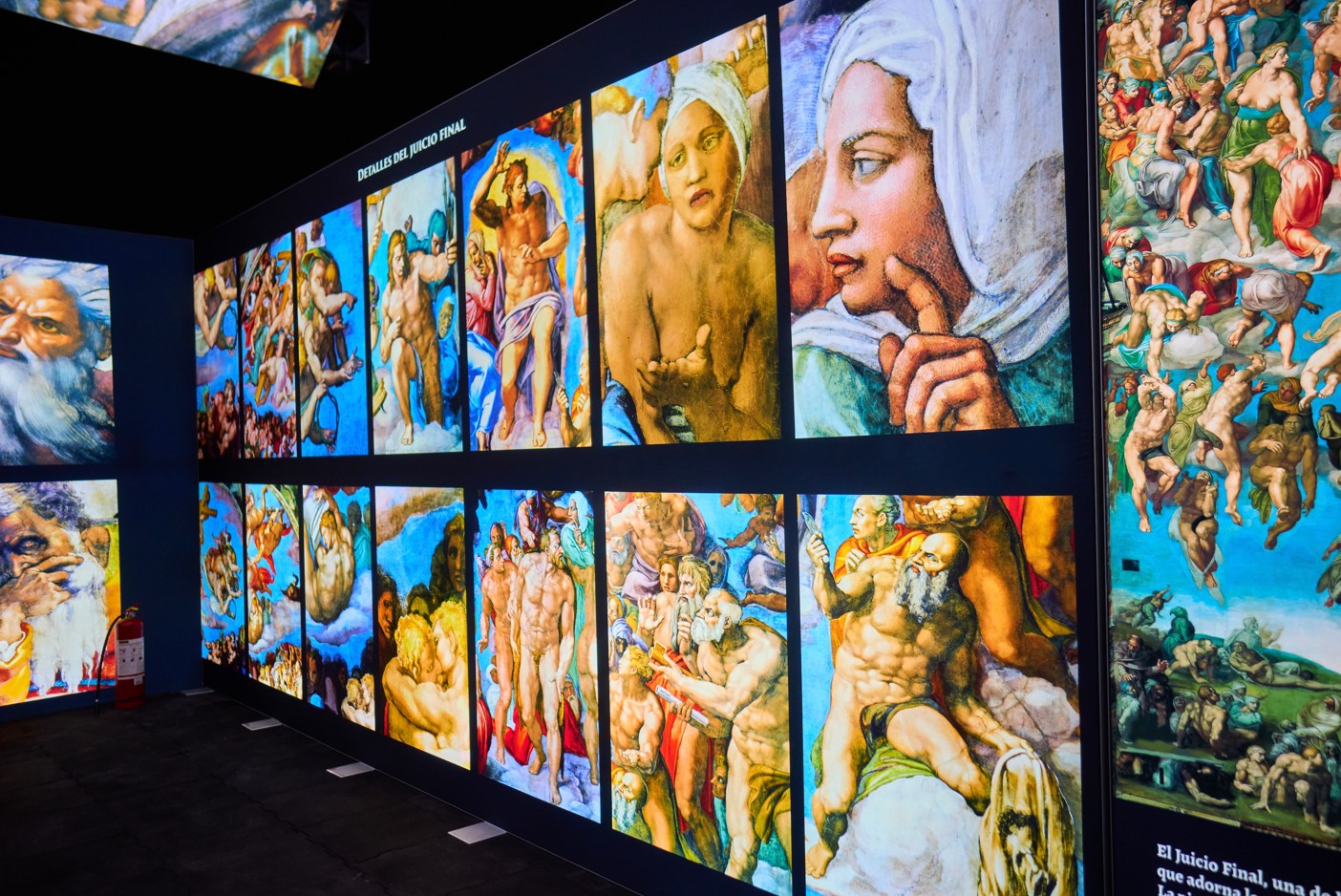The arrival of Michelangelo – Art & Legacy in Miami Beach marks a rare and remarkable opportunity for the public to engage with the genius of one of history’s greatest artists.
This exhibition is more than a display; it’s a journey through form, spirit, and imagination. Walking into the space at 1212 Lincoln Road, visitors are invited not just to observe, but to enter Michelangelo’s world—a world where the divine meets the human, where the stone speaks.
This immersive installation harnesses the power of scale, light, and contemporary exhibition design to do something extraordinary: it makes Michelangelo’s monumental work tangible, accessible, and alive. Through life-sized reproductions, innovative visual storytelling, and carefully curated soundscapes, the exhibition doesn’t simply honor Michelangelo—it translates his vision into a modern, experiential language.
Encountering the Immortals in Marble
The exhibition opens with striking full-scale reconstructions of Michelangelo’s most iconic sculptures. The David stands proud and poised, radiating youthful strength and resolve. It’s a reminder of Michelangelo’s deep understanding of the human body—not only as an anatomical machine but as a vessel of tension, spirit, and potential. Standing before it at eye level allows visitors to appreciate details often lost in photos or from afar: the furrow of the brow, the pulse in the neck, the coiled energy before action.
Nearby, the Pietà offers an emotional counterpoint. Where David speaks of defiance, the Pietà whispers of surrender. Mary’s face, serene yet sorrowful, cradling the lifeless Christ, is one of the most powerful expressions of compassion in Western art. Even in reproduction, its beauty and sorrow resonate deeply. What Michelangelo did in marble was not merely sculpture—it was catharsis rendered permanent.
A Ceiling Reimagined
The exhibition’s centerpiece is an astonishing re-creation of the Sistine Chapel ceiling, delivered as a panoramic and immersive installation. This is no mere backdrop or projection—it’s a thoughtfully constructed experience that allows the viewer to stand within a visual cosmos. The ceiling’s major narrative panels unfold around you: The Creation of Adam, The Fall of Man, The Flood. Each scene pulses with energy and movement, inviting contemplation from new and intimate perspectives.
The most iconic of these, The Creation of Adam, is rendered with remarkable clarity. The famous nearly-touching fingers take on a new immediacy in this space. No longer constrained to Vatican silence or neck-craning distance, visitors can observe the textures, the colors, the emotional charge of the composition. This democratization of perspective may be one of the most powerful things an exhibition like this can offer.
The Language of the Body
Elsewhere, the viewer encounters Michelangelo’s lesser-known, but no less masterful, figures: the ignudi—the heroic nude youths who frame the central ceiling panels—and the prophets and sibyls that guard the edges of time and prophecy. These figures are where Michelangelo’s anatomical precision meets symbolic depth. The ignudi, in their raw muscularity, are more than decorative—they are meditations on beauty, strength, and human perfection. The prophets and sibyls, on the other hand, bear the weight of foresight, draped in robes that fall with impossible grace.
Seeing these figures full-sized and up close, the visitor begins to understand something crucial: Michelangelo’s art is not about stillness, but about motion captured at the apex of expression. These are bodies in transition—thinking, suffering, creating.
Sound, Space, and the Atmosphere of Art
What sets this installation apart is its insistence on atmosphere. It’s not just what you see—it’s what you hear, feel, and sense. A carefully designed audio environment surrounds you with quiet choral harmonies, echoing the sacred mood of the Sistine Chapel. Light shifts over time, replicating the changing tone of the day. As you move through the space, you are guided not by signs but by the natural flow of the architecture and sensory cues.
This sensory engagement draws visitors out of passive observation and into participation. The art begins to unfold at the rhythm of your breath. It’s a living dialogue, a conversation between viewer and master that transcends centuries.
The Studio Spirit – Creating Through the Legacy
One of the exhibition’s most forward-looking elements is the Creative Lab. Here, visitors are encouraged to move from reverence to response. Children and adults alike can draw, sculpt, and experiment with techniques inspired by Michelangelo’s methods. It’s not a side activity—it’s a fundamental part of the experience. By picking up a pencil or modeling clay, visitors step into the role of creator, not just consumer. That act itself echoes Michelangelo’s own restless, unending pursuit of the perfect form.
In an age where attention is scattered and digital, this hands-on, deeply personal moment of creativity becomes a quiet revolution.
Relevance and Reach – Why This Matters Today
What makes this exhibition truly exceptional is that it redefines how we relate to classical art. It proves that a 500-year-old body of work can be not only relevant, but urgently contemporary. It also removes barriers—geographical, educational, psychological—that often prevent people from engaging with high art.
This is Michelangelo without intimidation. There are no glass cases, no hushed corridors, no formal lectures. Instead, there is space to wonder, to reflect, and to feel. Whether you are a scholar or a student, a tourist or a local, you are invited into the heart of the Renaissance—and more importantly, into the heart of what it means to create.
Michelangelo in the Present Tense
What remains so powerful about Michelangelo’s art is that it refuses to be static. His figures strain, twist, cry out. His architecture lifts. His poetry aches. And even now, in a modern installation in the middle of a bustling city, those same forces are at work.
You walk out of Michelangelo – Art & Legacy not just having seen art, but having felt it, walked among it, and been changed by it. That’s the mark of true genius: to be as alive today as you were half a millennium ago.
And so, this exhibition is more than a tribute. It’s a testament. Michelangelo isn’t just remembered here—he is reawakened. And through him, perhaps, so are we.

